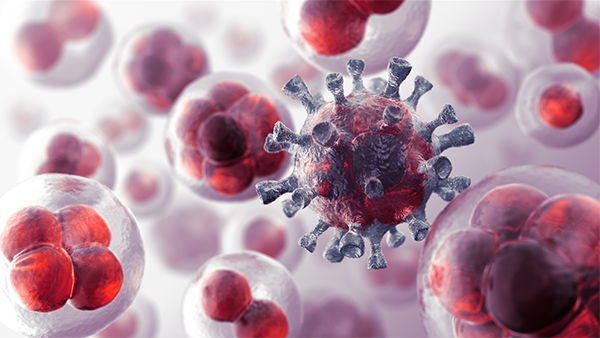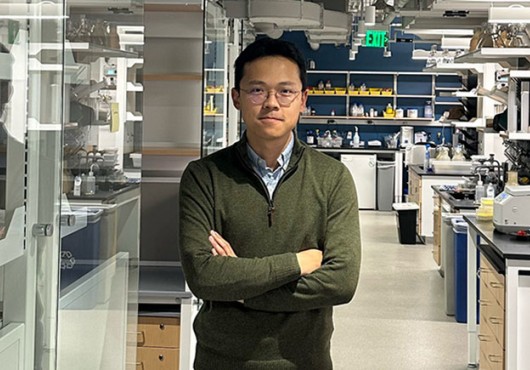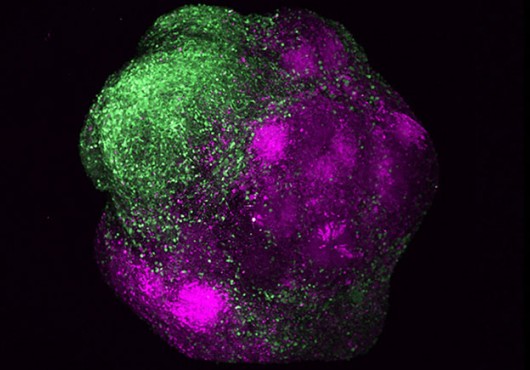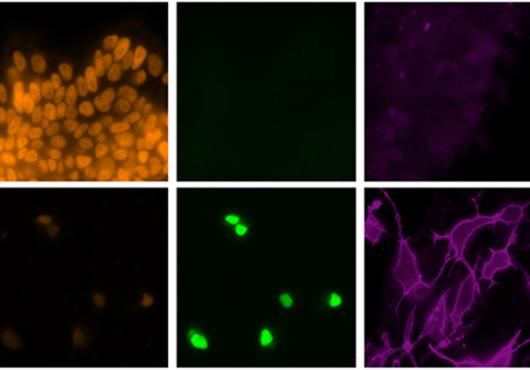
Image: BlackJack3D/Getty Images
Regenerative medicine using human pluripotent stem cells to grow transplantable tissue outside the body carries the promise to treat a range of intractable disorders, such as diabetes and Parkinson’s disease.
As stem cell lines grow in a lab dish, however, they often acquire mutations in the TP53 (p53) gene, an important tumor suppressor responsible for controlling cell growth and division, according to new research from a team at Harvard Medical School, the Harvard Stem Cell Institute and the Stanley Center for Psychiatric Research at the Broad Institute of MIT and Harvard.
The findings suggest that genetic sequencing technologies should be used to screen stem cell cultures so that those with mutated cells can be excluded from scientific experiments and clinical therapies. If such methods are not employed, the researchers said, it could lead to an elevated cancer risk in patients receiving transplants.
The paper, published online in the journal Nature on April 26, comes at just the right time, the researchers said, as experimental treatments using human pluripotent stem cells are ramping up across the country.
“Our results underscore the need for the field of regenerative medicine to proceed with care,” said the study’s co-corresponding author, Kevin Eggan, a principal faculty member at HSCI and director of stem cell biology at the Stanley Center.
The team said that the new research should not discourage the pursuit of experimental treatments, but instead should be heeded as a call to rigorously screen all cell lines for mutations at various stages of development as well as immediately before transplantation.
“Fortunately,” said Eggan, this additional series of genetic quality-control checks “can be readily performed with precise, sensitive and increasingly inexpensive sequencing methods.”
Hidden mutations
Researchers can use human stem cells to recreate human tissue in the lab. Eggan’s lab in Harvard University’s Department of Stem Cell and Regenerative Biology uses human stem cells to study the mechanisms of brain disorders, including amyotrophic lateral sclerosis, intellectual disability and schizophrenia.
Eggan has also been working with Steve McCarroll, associate professor of genetics at HMS and director of genetics at the Stanley Center, to study how genes shape the biology of neurons, which can be derived from human stem cells.
McCarroll’s lab recently discovered a common precancerous condition in which a blood stem cell in the body acquires a so-called pro-growth mutation and then outcompetes a person’s normal stem cells, becoming the dominant generator of that person’s blood cells. People with this condition are 12 times more likely to develop blood cancer later in life.
The current study’s lead authors, Florian Merkle and Sulagna Ghosh, collaborated with Eggan and McCarroll to test whether laboratory-grown stem cells might be vulnerable to an analogous process.
“Cells in the lab, like cells in the body, acquire mutations all the time,” said McCarroll, co-corresponding author of the study. “Mutations in most genes have little impact on the larger tissue or cell line. But cells with a pro-growth mutation can outcompete other cells, become very numerous and ‘take over’ a tissue.”
“We found that this process of clonal selection—the basis of cancer formation in the body—is also routinely happening in laboratories.”
A p53 problem
To find acquired mutations, the researchers performed genetic analyses on 140 stem cell lines. Twenty-six lines had been developed for therapeutic purposes using Good Manufacturing Practices, a quality control standard set by regulatory agencies in multiple countries. The remaining 114 were listed on the NIH registry of human pluripotent stem cells.
“While we expected to find some mutations, we were surprised to find that about 5 percent of the stem cell lines we analyzed had acquired mutations in a tumor-suppressing gene called p53,” said Merkle.
Nicknamed the “guardian of the genome,” p53 controls cell growth and cell death. People who inherit p53 mutations develop a rare disorder called Li-Fraumeni syndrome, which confers a near 100 percent risk of developing cancer in a wide range of tissue types.
The specific mutations that the researchers observed are dominant negative mutations, meaning that when present on even one copy of p53, they compromise the function of the normal protein. The same dominant negative mutations are among the most commonly observed mutations in human cancers.
“They are among the worst p53 mutations to have,” said co-lead author Ghosh.
The researchers performed a sophisticated set of DNA analyses to rule out the possibility that these mutations had been inherited rather than acquired as the cells grew in the lab.
Ensuring safety
In subsequent experiments, the scientists found that p53 mutant cells outperformed and outcompeted nonmutant cells in the lab dish. In other words, a culture with a million healthy cells and one p53 mutant cell, said Eggan, could quickly become a culture of only mutant cells.
“The spectrum of tissues at risk for transformation when harboring a p53 mutation includes many of those that we would like to target for repair with regenerative medicine using human pluripotent stem cells,” said Eggan.
Those organs include the pancreas, brain, blood, bone, skin, liver and lungs.
However, Eggan and McCarroll emphasized that now that this phenomenon has been found, inexpensive gene-sequencing tests will allow researchers to identify and remove from the production line cell cultures with concerning mutations that might prove dangerous after transplantation.
The researchers point out in their paper that screening approaches already exist to identify these p53 mutations and others that confer cancer risk. Such techniques are being used in cancer diagnostics.
In fact, an ongoing clinical trial that is transplanting cells derived from induced pluripotent stem cells (iPSCs) is using gene sequencing to ensure the transplanted cell products are free of dangerous mutations.
This work was supported by the Harvard Stem Cell Institute, the Stanley Center for Psychiatric Research, the Rosetrees Trust, the Azrieli Foundation, the Howard Hughes Medical Institute, the Wellcome Trust, the Medical Research Council, the Academy of Medical Sciences and grants from the National Institutes of Health (HL109525, 5P01GM099117, 5K99NS08371, HG006855, MH105641).





